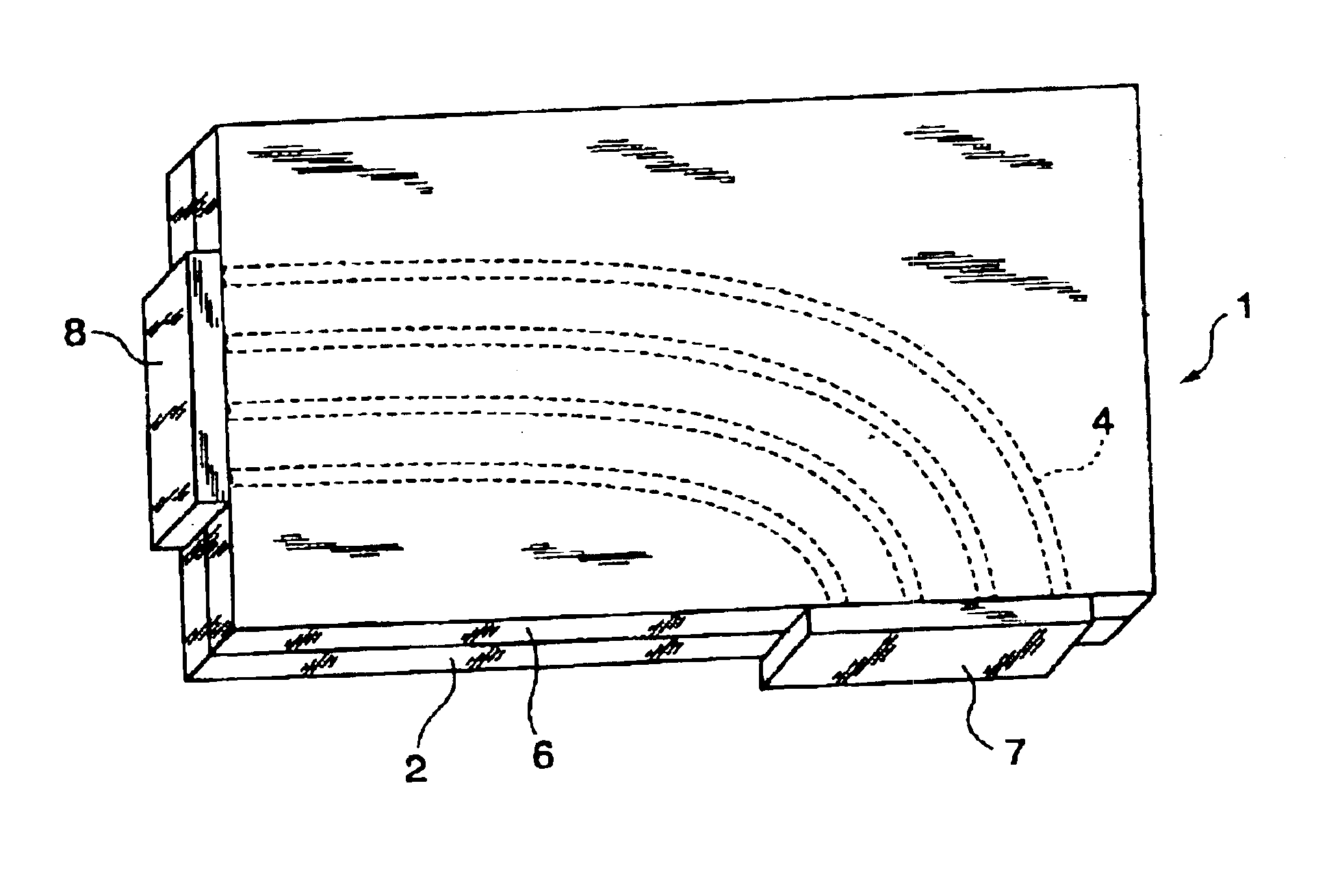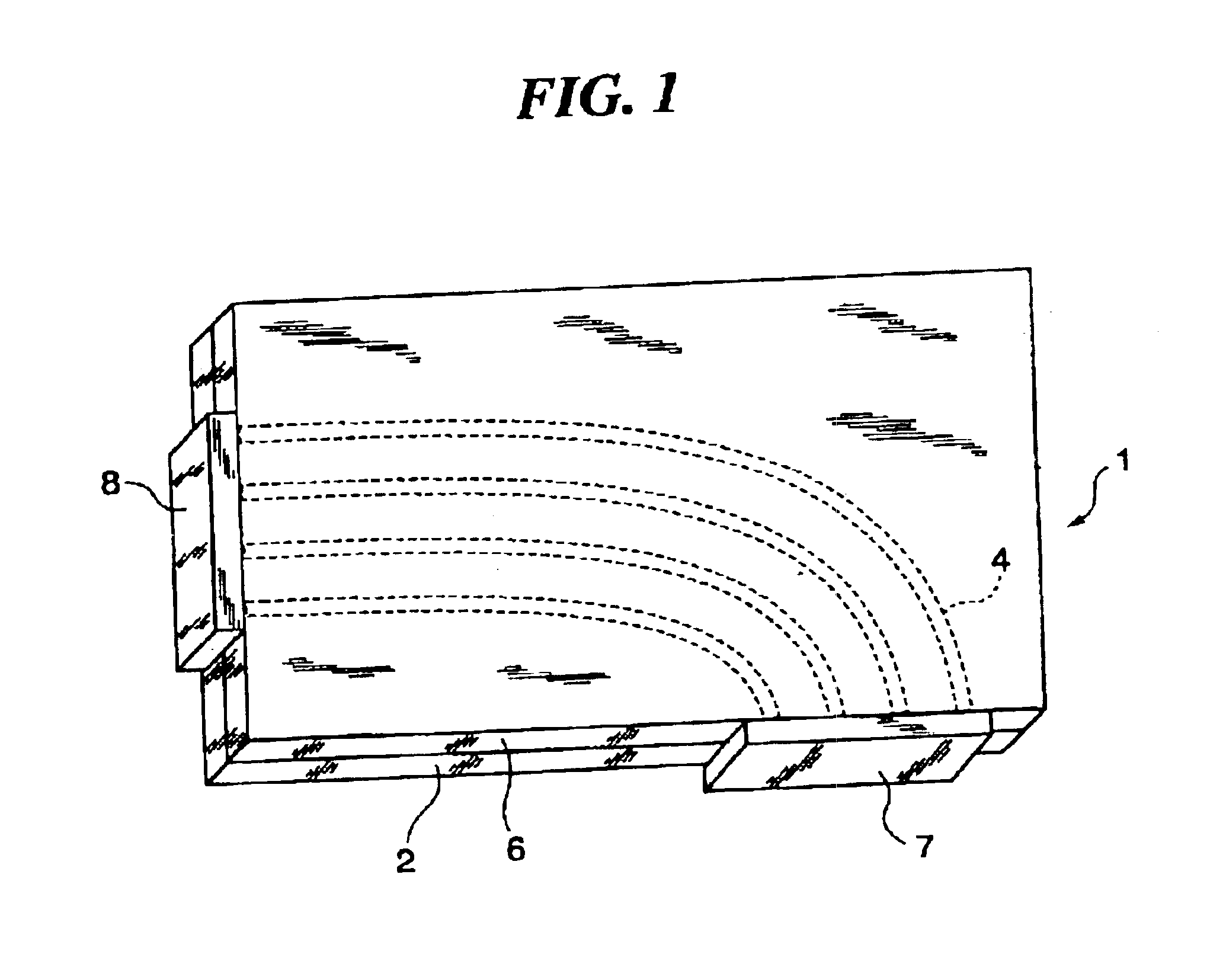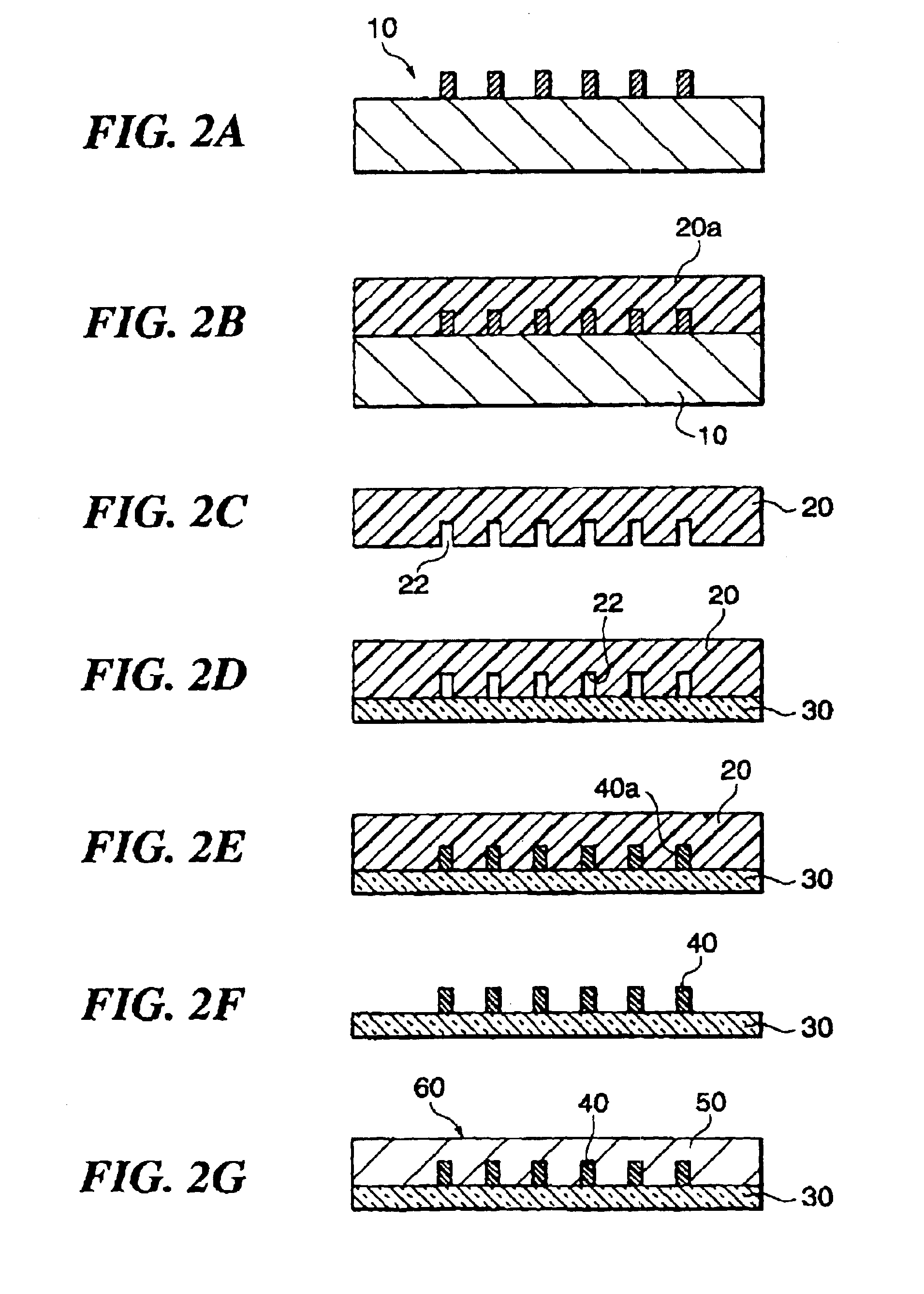Optical element and manufacturing method thereof
a manufacturing method and technology of optical elements, applied in the field of optical elements, can solve the problems of increasing the cost, unable to obtain sufficient difference between the core layer and the clad layer for refractive index, and the accuracy of the obtained core diameter, etc., and achieves the effect of low cost and simple and convenient method
- Summary
- Abstract
- Description
- Claims
- Application Information
AI Technical Summary
Benefits of technology
Problems solved by technology
Method used
Image
Examples
example 1
[0091]After coating a thick film resist (SU-8, manufactured by Microchemical Co.) to an Si substrate by a spin coating method, it was prebaked at 80° C., exposed through a photomask and developed to form four convexes each of a square cross section (width: 50 μm, height: 50 μm) as shown in FIG. 1. The distance between each of the convexes was set to 250 μm. Then, it was postbaked at 120° C. to prepare an original substrate for manufacturing an optical waveguide channel core.
[0092]Then, after coating a releasing agent to the original substrate, a thermosetting dimethyl siloxane resin (SYLGARD 184, manufactured by Dow Corning Asia Co.) was cast and cured by heating at 120° C. for 30 minutes and then peeled to prepare a mold having concaves corresponding to the convexes of the square cross section (mold thickness: 3 mm). Further, both ends of the mold were cut to prepare an input / output portion for the following UV-ray curable resin to form a template.
[0093]The template and a film subs...
example 2
[0096]An original substrate for preparing an optical waveguide channel having four convexes each of a square cross section (width: 50 μm, height: 50 μm) was by the same method as in Example 1. Then, after preparing a mold in the same manner as in Example 1, both ends were cut to form a template. The template and an ARTON film (thickness: 180 μm) slightly larger than the template were closely adhered and, when several drops of a thermosetting resin at a viscosity of 500 mPa·s (manufactured by JSR Co.) were dripped to the input / output portion at one end of the template, the concaves were fill with the thermosetting resin by the capillary phenomenon. It was thermally cured by heating for 30 minutes in an oven at 130° C. When the template was peeled from the ARTON film, a core of the same shape as the original substrate convexes was formed on the ARTON film. The refractive index of the core was 1.570. Further, after coating, a thermosetting resin with the refractive index after curing b...
example 3
[0098]An original substrate for preparing an optical waveguide channel having for convexes each of a square cross section (width: 50 μm, height: 50 μm) by the same method as in Example 1. Then, after preparing a mold in the same manner as in Example 1, both ends were cut to form a template. The template and an ARTON film (thickness: 180 μm) slightly larger than the template were closely adhered and several drops of a thermosetting resin at a viscosity of 1300 mPa·s (PJ3001, manufactured by JSR Co.) were dripped to the input / output portion at one end of the template. The template and ARTON film were adhered closely, which were placed in a container depressurized by a vacuum pump (1.0 Pa). The UV-ray curable resin was filled into the concaves instantly by the capillary phenomenon. After taking out the same from the container, the upper portion of the template was irradiated with UV-light at 50 mW / cm2 for 5 minutes to conduct curing and the template was peeled. A core with a refractive...
PUM
 Login to View More
Login to View More Abstract
Description
Claims
Application Information
 Login to View More
Login to View More - R&D
- Intellectual Property
- Life Sciences
- Materials
- Tech Scout
- Unparalleled Data Quality
- Higher Quality Content
- 60% Fewer Hallucinations
Browse by: Latest US Patents, China's latest patents, Technical Efficacy Thesaurus, Application Domain, Technology Topic, Popular Technical Reports.
© 2025 PatSnap. All rights reserved.Legal|Privacy policy|Modern Slavery Act Transparency Statement|Sitemap|About US| Contact US: help@patsnap.com



